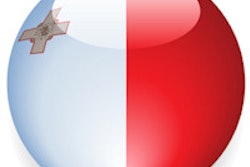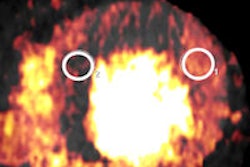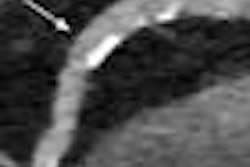Using software that automatically selects the tube current modulation significantly reduces the radiation dose in coronary CT angiography (CCTA) compared with manual kV selection based on patient size, researchers from South Korea reported at RSNA 2012 in Chicago.
Use of the Automated Tube Current Selection with Tube Current Modulation (APSCM) software cut the dose by about one-fourth without reducing image quality -- in part by choosing 80 kV rather than 100 kV more often than traditional protocols based on body mass index (BMI) would have indicated, they reported.
"Coronary CTA is a beneficial noninvasive modality for evaluating coronary artery disease, but there have been increasing concerns about radiation dose," said Dr. Ji Young Ko from Yonsei University College of South Korea. Tube current modulation (TCM) is a good way to reduce dose because radiation dose is proportional to the square of the kV used, producing big reductions in dose between 100 kV and 80 kV, she said. The use of lower kV also enhances iodine-induced contrast, which is appropriate for high iodine contrast applications. However, with lower kV, increased noise is inevitable for larger patients.
In their study, Ko, Dr. Young Jean Park, and colleagues analyzed the effects of APSCM (Care kV, Siemens Healthcare) in dose reduction and image quality when applied to CCTA compared with conventional BMI-based exam protocols. In total, 239 patients referred for coronary CTA were scanned using CareDose, and 248 consecutive patients underwent standard BMI- and kV-based CCTA.
The data acquisition mode on the dual-source scanner (Definition FLASH, Siemens Healthcare) was determined according to the heart rate, and included the following:
- FLASH mode (prospectively ECG-triggered high-pitch spiral mode)
- Axial mode (prospectively ECG-triggered axial mode)
- Spiral mode with tube current modulation (retrospectively gated acquisition with ECG-based tube current modulation)
The researchers varied the scan length according to the indication for coronary CTA -- for example, coronary artery disease, bypass graft evaluation, or triple rule-out, or evaluating pulmonary vein anatomy prior to radiofrequency ablation. They found no significant difference in the proportion of each indication between the two groups, Ko said.
They reported the dose both in CTDIvol and dose length product (DLP) for each acquisition type, analyzing the results using independent t-tests, Mann-Whitney U test, or chi-square test.
The comprehensive evaluation of differences between the scanning techniques included evaluation of image noise, CT values of the proximal right coronary artery (RCA) and left main artery (LMA), the signal-to-noise ratios (SNRs), contrast-enhancement CT values of the same two arteries, and finally the subjective image quality and lowest image quality scores of the four main arteries, Ko said.
For subjective image quality -- two observers independently rated all CCTA exams on a four-point scale, with four being optimal, she said.
There were no significant differences in sex, height, weight, and BMI between the two patient groups. The use of APSCM revealed significant reduction in radiation dose when compared with the BMI-based protocol, in both mean CTDIvol (18.4 ± 18.1 mGy versus 24.5 ± 22.5 mGy, p < 0.001) and mean DLP. The BMI method puts anyone over 19 BMI into the 100 kV group. The mean tube-current time product was 301.0 for the Care kV group and 330.0 for the BMI-based group. Also, 80kV was used more frequently in the APSCM group (p < 0.0001).
The mean CT values, contrast enhancement of coronary arteries, and image noise were all significantly higher in the APSCM group, but the SNR and CNR were 16% lower, Ko said. However, diagnostic image quality was maintained, with no significant difference between the two groups (p = 0.887).
Radiation doses with APSCM vs. BMI-based exposure in CCTA
|
||||||||||||||||||||||||||||||||||||||||||||||||||||||
Image quality of APSCM versus BMI-based CCTA exposure
|
|||||||||||||||||||||||||||
Using APSCM, the mean CT value was increased by 9%, while mean contrast enhancement increased by 7%, Ko reported. Image noise increased by 30% with the use of APSCM, therefore SNR and CNR were reduced by 16%. Still, the fact that subjective image quality was maintained suggests that SNR and CNR remained sufficiently high, she said.
"In the Care kV group, there was a 25% reduction in the mean CTDIvol, and a 23% relative reduction in the mean DLP," Ko said. "CT scans performed in axial and spiral mode may benefit the most in radiation dose reduction with the use of Care kV. Our study shows that the use of Care kV in an actual clinical setting with patients of various BMI levels significantly reduces radiation dose while maintaining diagnostic image quality."



















